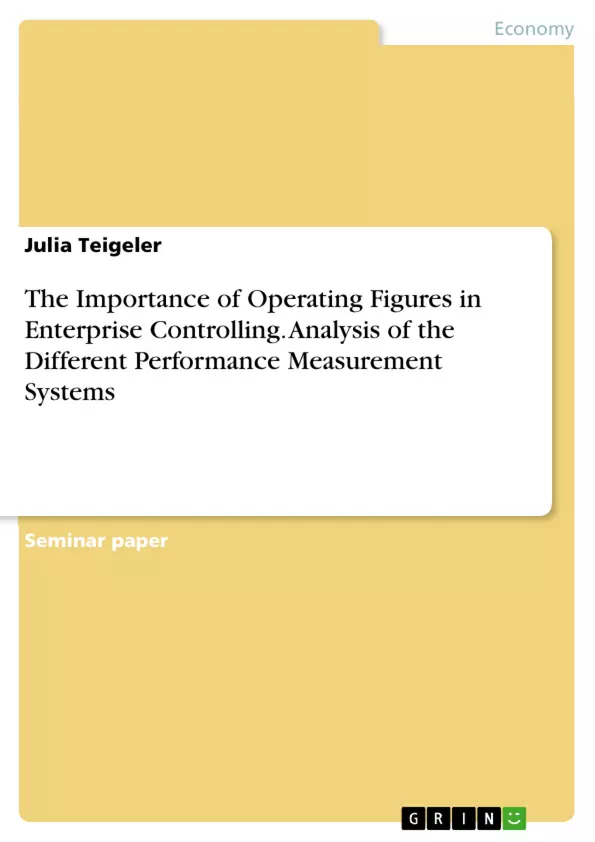This assignment is written as exam in the module international investment and controlling as the test performance in controlling. Like it is known from everyday working performance it is very important to integrate a controlling system in every company so that the bosses are able to get to know the important figures of the company and to compare them on the one hand with the figures of the past years and on the other hand with them of the competitors. Every company has a publication requirement for some figures and so parts of them are able to be compared inside every branch. With operation figures problems can be defined and it can help to determine operating high and low points as well as to control (target-actual comparison). All in all it can be said that operating figures provide condensed information and that is very important for every company. So with this assignment the need of operating figures should be shown as well as some systems to figure them out are explained and analysed.
Inhaltsverzeichnis (Table of Contents)
- Executive summary
- Table of Contents
- List of Abbreviations
- List of Figures
- 1 Introduction
- 1.1 Problem Definition and Objectives
- 1.2 Structure of the paper
- 1.3 Methodology
- 2 Importance of operating figures
- 2.1 Types of operating figures
- 2.2 Functions of operating figures
- 2.3 Advantages and Disadvantages in using of operating figures
- 3 Performance Measurement Systems
- 3.1 ROI System
- 3.2 Balanced Scorecard (BSC)
- 3.3 RL System
- 4 Critical Analysis of the described performance measurement systems
- 4.1 ROI System
- 4.2 Balanced Scorecard (BSC)
- 4.3 RL System
- 5 Conclusion and Outlook
- 5.1 Conclusion
- 5.2 Recommendations / Outlook
- List of References
- ITM Checklist
- Appendix 1 - ROI System
- Appendix 2 - RL System profitability part
Zielsetzung und Themenschwerpunkte (Objectives and Key Themes)
This assignment aims to demonstrate the significance of operating figures in business and analyze various performance measurement systems used to track and manage them. The primary focus is on how these figures provide valuable insights for management decision-making and contribute to the overall success of a company.
- The crucial role of operating figures in enterprise controlling
- Different performance measurement systems and their applications in companies
- Advantages and limitations of using operating figures
- Analysis of ROI System, Balanced Scorecard, and RL System
- Recommendations and future outlook for the implementation of these systems
Zusammenfassung der Kapitel (Chapter Summaries)
This assignment commences with an introduction, presenting the importance of controlling systems in today's business environment. It then delves into the significance of operating figures, exploring their types, functions, advantages, and disadvantages. Chapter three introduces three prominent performance measurement systems: ROI System, Balanced Scorecard (BSC), and RL System. Each system is further analyzed in chapter four, examining its strengths and weaknesses. Finally, the concluding chapter summarizes the key findings and offers recommendations for the effective implementation of these systems.
Schlüsselwörter (Keywords)
This assignment focuses on operating figures, performance measurement systems, ROI System, Balanced Scorecard, RL System, enterprise controlling, business performance, financial reporting, and management decision-making.
- Citation du texte
- Julia Teigeler (Auteur), 2015, The Importance of Operating Figures in Enterprise Controlling. Analysis of the Different Performance Measurement Systems, Munich, GRIN Verlag, https://www.grin.com/document/298895



